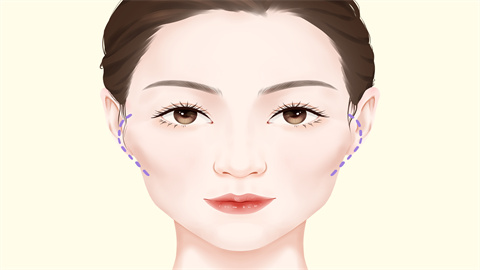Why do women's lips turn purple?
Generally, purple lips in women may be caused by cold exposure, excessive fatigue, anemia, chronic obstructive pulmonary disease (COPD), heart failure, and other factors. It is recommended to seek timely medical attention and receive treatment under a doctor's guidance. Detailed explanations are as follows:

1. Cold Exposure
When the body is exposed to a cold environment, it automatically constricts peripheral blood vessels to maintain core body temperature and reduce heat loss. When blood vessels in the lips constrict, blood flow slows down, resulting in cyanosis (bluish discoloration) of the lips. It is important to keep warm in daily life, especially during cold weather, by adding appropriate clothing and wearing scarves, masks, etc., and avoiding prolonged exposure to cold environments.
2. Excessive Fatigue
Long-term excessive fatigue places the body in a state of stress, causing sympathetic nerve excitement and subsequent vasoconstriction. Meanwhile, increased metabolism and oxygen consumption may lead to relative oxygen deficiency, increasing the amount of reduced hemoglobin in lip blood vessels and causing purple lips. It is recommended to arrange work and rest time reasonably, avoid working continuously for long hours, ensure sufficient sleep daily, and balance work and rest.
3. Anemia
Anemia may be caused by insufficient iron intake or excessive blood loss due to heavy menstruation, resulting in reduced red blood cell count or decreased hemoglobin levels in the blood. This diminishes the blood's oxygen-carrying capacity, leading to inadequate oxygen supply to various tissues and organs throughout the body. The lips may also become cyanotic due to hypoxia. Symptoms may include pale complexion and dizziness. Patients should follow medical advice to take medications such as ferrous sulfate tablets, vitamin C tablets, ferrous fumarate granules, etc.
4. Chronic Obstructive Pulmonary Disease
Chronic obstructive pulmonary disease is usually caused by long-term smoking, air pollution, occupational dust exposure, and other factors. These may lead to chronic airway inflammation, gradual airway narrowing, and airflow limitation. Patients experience impaired respiratory function and gas exchange disorders, resulting in decreased blood oxygen levels and increased reduced hemoglobin, which causes purple lips. Symptoms may also include chronic cough, sputum production, and shortness of breath. Patients may use medications such as salbutamol aerosol, budesonide-formoterol powder inhaler, aminophylline tablets, etc., under a doctor's guidance.
5. Heart Failure
Heart failure may be caused by conditions such as coronary atherosclerotic heart disease or cardiomyopathy. The heart cannot pump sufficient blood to meet the needs of various tissues and organs in the body, leading to circulatory disorders, systemic hypoxia, and purple lips. Symptoms may also include dyspnea (difficulty breathing), fatigue, and edema (swelling). Patients may use medications such as furosemide injection, captopril tablets, metoprolol sustained-release tablets, etc., under medical guidance.
In daily life, it is important to maintain a balanced diet, engage in appropriate exercise to enhance physical fitness, and avoid exposure to harmful environmental factors.









